|
Chapter Three
Welcome to Cape Town
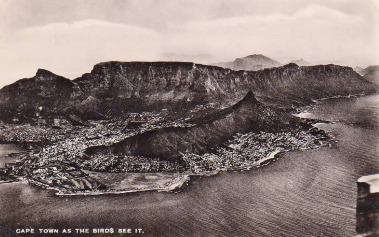
December 9th 1941:
The convoy had arrived safely in Cape Town`s Table Bay, they had sailed more than eight thousand miles since leaving Halifax, much needed shore leave was granted. Luckily none of the convoy had fallen prey to the wolf packs or lone raiders of the Kriegsmarine, although there had been many reports of submarine sightings, was it luck or judgement?
Earlier in May 1941, HMS Auberita, Bulldog and Broadway attacked and forced a U boat, U 110, to surface after heavy depth charging. The U-boats commander, abandoned his boat after setting off charges to scuttle her, she never sank. The British boarding party, not only captured U 110, but also the secret German deciphering machine used to vector U boats to allied convoys, the Enigma machine. Enigma enabled the Admiralty to read German radio traffic. This capture was to be one of the biggest of the entire war and was to be kept secret for the next thirty years.
The Admiralty knew where every enemy submarine and raider was operating, this secret was not known however to the U.S. Navy at the time of William Sail`s voyage, Roosevelt was not told by Churchill until the January of 1942.
Captain Beary, the convoys commodore, was advised by the Admiralty, as to the safe courses throughout the entire voyage. William Sail had been safely guided to all ports, a fact unknown to anyone in the convoy or the United States.
So here they were in Cape Town`s Table Bay, the 18th Division, the 55th Brigade, the West Point and Albert Morrell. The conditions they were to experience in Cape Town, were to be very different to those back home in dreary war time Britain, with a warm welcome to match.
The first of my recollections for “Welcome to Cape town” comes from Les Pearson.
Mr. Les Pearson. 5th Battalion the Sherwood Foresters:
After three weeks of South Atlantic crossing, the boat sailed into sunny Cape Town on the 9th of December1941. This part of our cruise to unknown lands was undoubtedly the best, four days shore leave being a great privilege to see one of the most spoken of and biggest capitals of one of our colonies. The first sight that we saw as the boat entered the harbour, was the lovely Table Mountain that we had learned so much about in our geography lessons at school.
We docked on the morning of the 9th, shore leave started for us at six o`clock at night. Just imagine how thrilling to get a walk round after being on such a large craft for about a month.
I felt very shy in my tropical kit, but that soon wore off after being in town for a while. My mates and I went to the pictures and had a good look round the first night, bringing plenty of chocolate, apples, oranges and English cig`s back to the boat. The second day we were allowed out from two o`clock, also the third and fourth days. These couple of days were spent very much the same as the first day, plenty of fun at the pictures, walks in the park, a visit to the museum, which was one of the best I have ever seen, also plenty of luxury café teas.
The last day was the best for me, this time I had L/cpl Roberts to accompany me. We set out at two o`clock, it happened to be a Friday, we suggested going to the “Tock-H” for a snack, having had nothing to eat at dinnertime on the boat, being so eager to get out. To our surprise we were invited by a lady at the “Tock-H”, to be taken out for a car ride round the outskirts of Cape Town, the Table Mountain and to go to dinner afterwards, so we did.
On meeting the kind people at six o` clock, we began the tour. They were well to do people, very well educated, as all white people are in Cape Town. Our time was always occupied by a thorough description of the most lovely scenery of the hills , houses and countryside.
We were touring for over one and a half hours, after which we went to a hotel for a three course dinner, which I enjoyed immensely. On the conclusion of our happy time, some more oranges, cig`s and ices were bought, then we returned to the boat tired after a very enjoyable day in Cape Town.
Alec Adamson recalls his time in Cape Town.
Mr. Alec Adamson. RAMC:
What a contrast between the austerity and blackout in Britain and the land of bright lights, unlimited food, fruit, sweets and clothing. Whilst the South Africans supplied troops to fight on our behalf, the war, as we knew it, had not touched them.
For a day or two prior to our arrival in Cape Town I had felt a bit seedy and had reported sick because of a cold and sore throat. Luckily it improved so that I was able to see something of Cape Province in addition to the very impressive sight of Table
Mountain from out at sea. The hospitality of the people must have been unequalled anywhere. They queued up in cars to take us out to see the sights and to their homes where we had a meal and spent a few enjoyable hours. Many of the cafes and places of entertainment were free as was train travel. We went to Muizenberg, which has a beautiful beach. The train seemed to pick its way quaintly and gently among the houses and the line was not fenced off as we have it in this country. We had a sight of the Queen Mary lying in Simonstown bay. She and the Mauritania did not travel in convoy as they could go at speeds well in excess of that of any German submarine afloat or submerged and so they were less likely to be the victims of attack. The Queen Mary carried about 15,000 troops, enough to populate a good-sized town.
It was thought that our stay in Cape Town would present a good chance for us to have some exercise and so a route march was organised. It was about ten miles and our route went through some of the shanty town areas with which we are familiar on our television screens all too often in that strife- torn province today. Segregation of the coloured people was the most notable feature in Cape Town – separate buses, separate railway compartments, separate cafes and restaurants. This was an experience of apartheid at first hand and it was quite alien to us. There must have been some cases where coloured members of our British army units landed in South Africa on just such a brief stop as ours. I have often wondered what treatment they would have received.
Among the free entertainments was a non-stop variety show in the City Halls. As it was free, we thought we would live it up and have a box. About six of us sat round the front row of a box, enjoying the show when the door opened behind us and several people, obviously dignitaries, came in. We made to leave but one of the party said quietly, “No, no, you chaps sit round the back row and we will take the front”- he continued- “Its the Mayor and Mayoress of Cape Town.” At the interval the Mayor invited us up to his private chambers and treated us to a drink. During the show the Mayoress handed round a bag of sweets among which were some Fox`s glacier mints. Now, my dentures had up till then coped with most things like chocolate and even an apple but Fox`s glacier mints were more than a match for them. They became locked solid, talk about lock-jaw! Try as I might, they just would not come apart and I had visions of sitting there very quietly, hoping that no one would talk to me, until the offending sweet had dissolved and given up its grip. Luckily, in the dark of the back row I was able to take out my entwined teeth and prise them apart by hand.
|
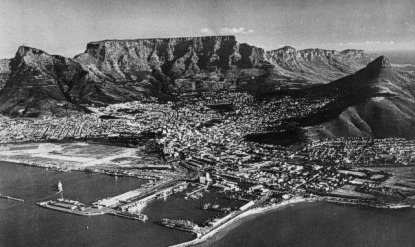
|
|
Table Bay
|
|
Arthur Bates shares his Cape Town memories.
Mr. Arthur Bates. 5th Battalion the Sherwood Foresters:
We met the Dillom family in a café, they treated us to tea and cake. They were chapel people. They invited us to their vineyard, it was beautiful, we picked grapes and afterwards had a proper sit down tea.
We had theatre tickets for that night, the family drove us to the theatre. We also spent the next day with the Dillom family.
My next recollection for “Welcome to Cape Town” comes from Alf Robinson.
Mr. Alf Robinson. 1st Battalion the Cambridgeshires:
We had four days ashore in Cape Town, three days free and one day on duty. When we first went ashore there were many cars lined up waiting to pick up troops, either to take them for sight seeing trips or to take them to their own homes and in general to see that they enjoyed their stay. We went ashore six handed and preferred to make our own way, the place was dominated by Table Mountain but we never went anywhere near it, we did go to a place called Sea Point, about eight miles from the centre of Cape Town, where there was a large Fun Fair.
There was no black-out and no shortage of anything at all. The only thing that marred our visit was the strong sense of Apartheid. The locals, wether they were of British or Dutch stock were charming enough to us, but we were constantly being warned to steer clear of the Cape coloured, who were not allowed to use white toilets, not allowed into white buildings and could only use a small portion of Public Transport.
Our one day of duty consisted of patrolling a section of Cape Town called either No.6 District or the Malay Quarter, this section was out of bounds to all troops. I never heard of any troops being caught there, as the patrols used to make as much noise as they could. All in all, Cape Town would probably be the only place that I should like to see again.
Jesse Adams recalls his time in Cape Town.
Mr. Jesse Adams. 1st Battalion the Cambridgeshires:
In December 1941, near the exit gates from the dock area, there was a large hoarding coloured red/maroon with letters in gold (gilt), proclaiming “Woolworths is in Adderly street” and so we made a bee-line for “Woolies”.
I recall that unlike the stores in pre-war England, where the slogan was, “Nothing over Sixpence”, in Cape Town it was everything over sixpence. Among my purchases were a pack of playing cards, which with some of my personal kit were lost during the brief action in Singapore. A pity really as they would have been very useful during the following three and a half years, when they would have possibly been worn out or confiscated!
|
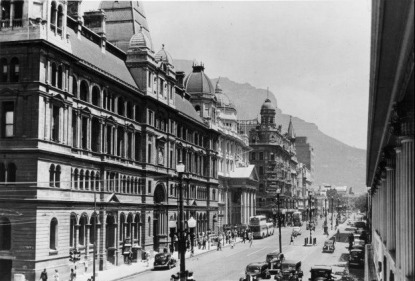
|
|
Adderly Street
|
|
Bill Pope shared this recollection for “Welcome to Cape Town”.
Mr. Bill Pope. RASC:
West Point arrived in Cape Town in December 1941, when going ashore the local ladies were handing out leaflets telling the troops of all the “welcomes” for them at all the places listed. I can honestly say, the reception was fantastic. Many of the troops on West Point were in Singapore a few weeks later and went in the bag, poor devils.
I was taken in hand in Cape Town by a family with Scottish links, they took me and a pal out into the country to visit their relatives, so I saw little of the clubs etc. From all accounts however, all praise was expressed for such a marvellous reception and welcome. I do remember however, that the U.S. Navy lads manning West Point were so grateful, that the skipper unloaded tons of white flour for the city, the first they had seen since war began, they had only had the coarser, darker stuff.
|
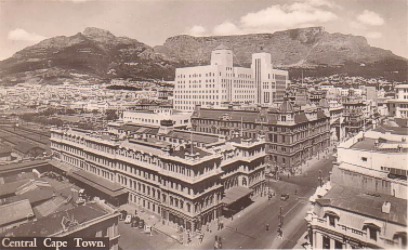
|
|
Downtown Cape Town
|
|
The following two pages contain copies of the information leaflets, given out by the ladies of Cape Town to visiting troops. This copy was kindly passed onto me by Alec Adamson.
|
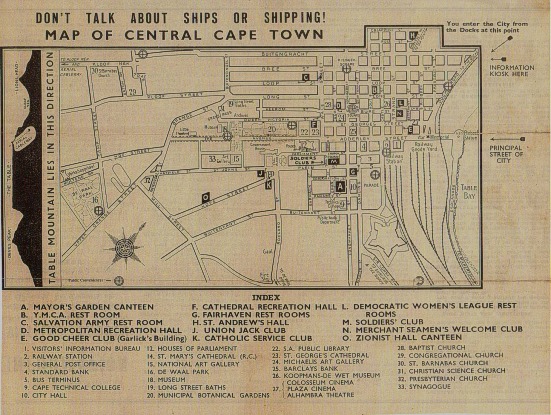
|
|
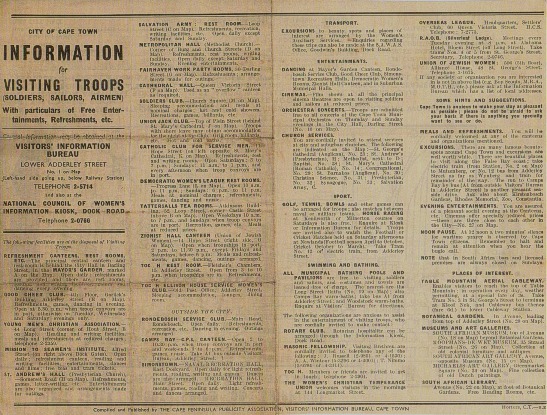
|
|
Cape Town Map
|
|
While the convoy was anchored in Table Bay, news was received of the sinking of the Prince of Wales, the pride of the British fleet and of the Battle Cruiser Repulse.
Churchill had received his bad news !
These two great Warship`s, had been ordered to Singapore by Churchill against the advice of the Admiralty, who had advised him, to send instead a larger fleet of older ships. This show of strength, an intended deterrent to the Japanese, was to cost this “Whitehall Warrior” dear.
December 12th 1941:
Churchill sent a signal to General Wavell, Commander-in-Chief India, which included the following passage.
“ ….. We are diverting the 18th Division, to Bombay ….. ”
William Sails Cape Town sojourn would not be a long one.
December 14th 1941:
All troops re-embarked, the convoy slipped out of Table Bay escorted by HMS Dorsetshire, destination Bombay.
December 19th 1941:
Churchill advised the Chiefs of Staff committee that “ ..it was always intended that all reinforcements diverted from the Cape to India should be used for the defence of Burma or sent to Far East Command as the situation requires….. 18th Division can be used by Wavell either for his own needs or to help Far East Command…..”
|